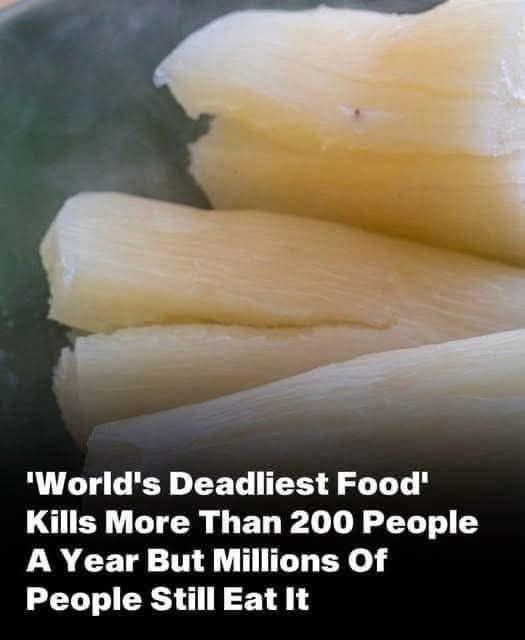The ‘World’s Deadliest Food’: Cassava’s Dual Nature as Both Lifeline and Threat
Cassava, a starchy root vegetable native to South America, has earned the ominous title of the “world’s deadliest food.” Despite its reputation, nearly 500 million people worldwide rely on cassava as a dietary staple. This paradox—being both a life-sustaining crop and a potential poison—stems from the plant’s natural defense mechanism: cyanogenic glucosides. These compounds can release cyanide if the root is not properly processed. According to the World Health Organization (WHO), approximately 200 people die each year from improper cassava consumption, making it a silent but persistent threat in regions where it is widely consumed.
The Hidden Danger in Cassava
Cassava’s toxicity lies in its raw form. The cyanogenic glucosides present in the root break down into hydrogen cyanide during digestion if the cassava is inadequately prepared. This risk is particularly acute in times of famine or war, when communities may lack the resources or knowledge to process the root safely. In such scenarios, shortcuts in preparation can lead to tragic consequences, including acute cyanide poisoning.
One of the most devastating outcomes of improper cassava consumption is konzo, an irreversible neurological condition that causes sudden paralysis. Konzo disproportionately affects impoverished communities with limited access to protein-rich foods, which help mitigate the effects of cyanide exposure. The disease serves as a grim reminder of how food insecurity exacerbates health risks, turning a vital staple into a source of suffering.
A Lifeline for Millions
Despite its dangers, cassava remains a cornerstone of diets across Africa, Asia, and Latin America. Its resilience makes it an invaluable crop: cassava can grow in poor soils and withstand droughts, making it a reliable food source in regions prone to harsh climates and unstable agricultural conditions. When properly prepared—through soaking, boiling, fermenting, or sun-drying—cassava becomes safe to eat and offers numerous nutritional benefits.
Rich in carbohydrates, fiber, and essential vitamins like vitamin C and B-complex, cassava provides much-needed energy and nutrients to millions of people. In many cultures, it is transformed into diverse products such as tapioca, flour, and fufu, showcasing its versatility in culinary traditions. For rural communities, cassava is more than just food—it’s a lifeline that sustains livelihoods and supports economies.
Balancing Risk and Reward
CONTINUE READING ON THE NEXT PAGE 🥰💕

